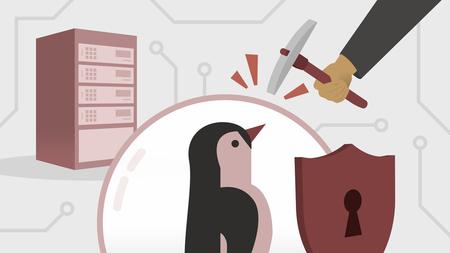English | MP4 | AVC 1280×720 | AAC 48KHz 2ch | 2h 50m | 338 MB
Are you a Linux systems administrator seeking to learn the best practices for securing your network? New threats are emerging every day, and as an administrator, you need to stay ahead of threats. In this course, Corey Holzer takes you through hardening for the system level, services, and user account management.
Table of Contents
Introduction
1 Course overview
Hardening in Theory
2 Why we harden
3 Hardening-in-depth as a concept
4 The CIS benchmarks
5 Hardening the foundation
6 Hardening storage devices
7 Firewalls and IPSIDS as endpoint security
8 Managing services
9 Lifecycle management
10 Recommendations for integrating hardening measures
System Hardening in Theory
11 Hardening the hardware
12 Hardening the bootloader
13 Securing the kernel
14 Disabling Ctrl-Alt-Delete (demo)
15 Securing storage devices, part one
16 Securing storage devices, part two
17 Disabling SUID and SGID permissions (demo)
18 Blocking unwanted activities and traffic
19 Minimizing the OS attack surface, part one
20 Minimizing the OS attack surface, part two
21 Network hardening at the host
22 System administration hardening
23 Testing, monitoring, and reviewing
System Hardening in Practice
24 General handling of services, part one
25 General handling of services, part two
26 Hardening public-facing services
27 Hardening the secure shell (SSH) service, part one
28 Limiting logins through SSH (demo)
29 Hardening the secure shell (SSH) service, part two
Accounts Hardening in Practice
30 User password authentication requirements
31 Alternate user authentication requirements
32 Creating and implementing a key pair for login (demo)
33 Account management requirements
34 Reviewing accounts
Course Review and What’s Next
35 Linux hardening course review
36 Linux hardening What’s next
Resolve the captcha to access the links!
